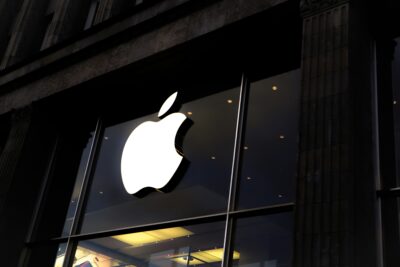
Finland is the promised land and backwater of digital customer loyalty
Nearly every Finn has a customer loyalty card, but their transition to the digital age has been anything but smooth. We invited experts from Musti ja Mirri, Wolt and Tallink Silja's Club One to join us for a digital customer loyalty event and podcast.
The Finns love customer loyalty programs. Up to 90 percent of Finns are members of a loyalty scheme, and eight out of ten are in more than one. The transition of customer loyalty to the digital era has been slow, however. Stamps and physical loyalty cards are still commonplace, and digital alternatives haven’t been considered or are poorly implemented.
But consumers do seem to want digital loyalty programs. According to a recently published Nordic report by payment service provider Nets, one in three Finns registered with a loyalty scheme use a loyalty application.
“All too often, the digitalization of customer loyalty means switching the plastic cards and stamp coupons to your mobile”, says Qvik’s Head of Design, Matias Pietilä. “We should instead be thinking about the personal value that a digital program can create for its members, and how it could improve the communication between service providers and their customers.”
“All of a sudden, you’re a cat person”, and other observations
Last Thursday, we held an event on this subject at our office. At the event, Tallink Silja’s Club One Director Hanna Michaelsson told us how to serve more than one million loyal customers digitally, on sea and land. For her part, Musti ja Mirri’s CRM Manager Satu Puumala talked about how to build a digital customer loyalty program for people when your customers are in fact animals. We finished the night with a panel, recorded as a podcast, joined by founding partner Elias Aalto of Wolt.
In the podcast, we talk about the automation of personalization…
“We learn from artificial intelligence and automation every day but also, sometimes things happen. Like, I have a big dog and my friend has a cat. So when I started to browse the cat products and bought a present for the cat, then all of a sudden I was in the cat program – and this happens to someone using our services every week”, says Satu Puumala of Musti ja Mirri.
…the different channels for reaching customers…
“E-mail marketing might be dead somewhere, but not in our company – it’s absolutely alive and kicking. It sounds outdated and old-fashioned, but we really make an effort on personalizing and providing right content for every client segment, and see good results”, says Hanna Michaelsson of Tallink Silja.
…and the definition of customer loyalty for startups.
“We don’t really ever use the word loyalty, because in startups it’s all about retention and frequency. But I think our biggest investment in loyalty is our customer service. One of the main driving factors of Wolt’s loyalty is that we are super good in customer support”, says Wolt’s Elias Aalto.
The podcast’s other topics include collecting customer data, doubts about the usefulness of wallet functions, gamification and the weather.
Still ground to cover in the digitalization of customer loyalty
According to our Head of Design, Matias Pietilä, companies are attacking the mobile channel’s customer loyalty potential from a variety of angles, just not always very successfully. For example, the idea of the Cardu service is that users can store their loyalty cards in one app.
“These types of external loyalty-management services haven’t been a hit”, Pietilä says. “They are not very easy to find, and maybe need too much effort to adopt to break into the mainstream. For the service providers, on the other hand, they don’t offer enough possibilities for personalizing the experience.”
The use of mobile payments at the counter has been deterred by the fact that the loyalty programs have not been integrated into the payment applications. Customers need to get their loyalty cards from their wallet, which kind of defeats the convenience of paying with your phone.
Google Pay and K-Plussa point the way
The wallet applications of Apple and Google help with the adoption issue and offer features that can’t be implemented with regular apps. For instance, alongside with Google Pay it’s easy to use loyalty cards such as K-Plussa. Apple Pay delivers customer loyalty information in connection with payments as a value added service or VAS, and Google Pay has a corresponding feature called Smart Tap.
“But one can question if it makes commercial sense for a service provider to direct users away from its own app to a third-party wallet application”, Pietilä says. “Such wallet apps also have limited support in POS systems, because NFC payments have not been standardized to the same degree as chip-based payments.”
The decision to adopt MobilePay’s Bluetooth-based payment solution indicates that the S and K groups don’t want to wait around for NFC support to improve, but are willing to migrate consumers to an entirely new payment solution to solve the loyalty issue.
RIP individual customer loyalty cards?
You don’t necessarily need a separate card to identify a loyal customer. For example, you can link loyalty to the customer’s ID card or identify users by stored payment card information, with the points accumulating automatically in the background.
“From the business perspective, this raises the issue whether customers will remember their loyalties well enough without a specific card or identification step”, Pietilä says. “Some service providers offer traditional cards because of this concern.”
Finally, no payment topic without a link to PSD2: in the future, service providers can let customers pay with their loyalty accounts, whether they have physical cards or not. In the spirit of PSD2, the money would be debited directly from the customer’s account instead of a card, reducing the middleman’s cut.
Illustration: Aija Malmioja



